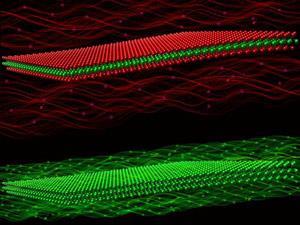Manipulating layers delivers the first MXene semiconductor

Semi-conductivity between the sheets was first published by Chemistry World.
Manipulating layers delivers the first MXene semiconductor

Semi-conductivity between the sheets was first published by Chemistry World.
No comments yet